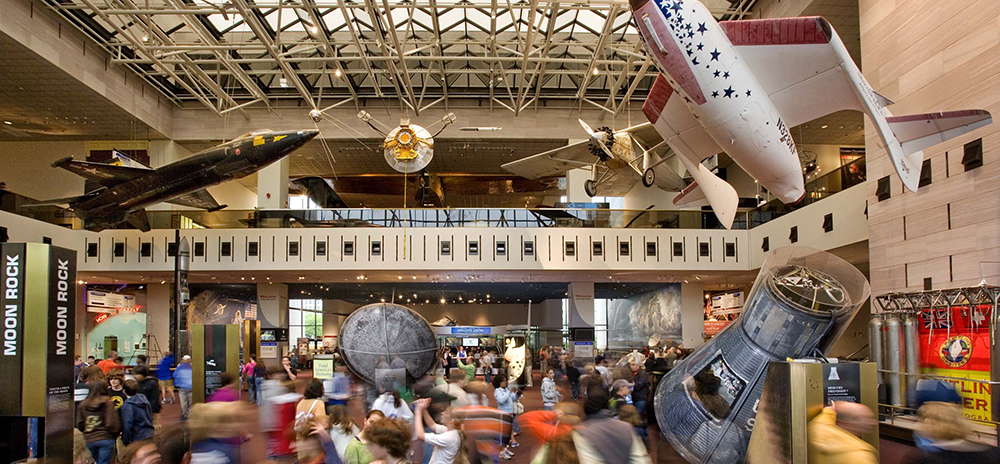
The “Explainers,” the National Air and Space Museum’s cohort of student volunteers, will soon be supplemented with electronic programming following a recent grant awarded by General Electric Aviation.
When young children visit the Smithsonian National Air and Space Museum and have questions — whether it’s about a planet, an exhibition, or a spaceship — they can ask the “Explainers,” groups of hired high school and college students trained in all things space.
Gilda Gallardo (COL ’17) who works at the National Air and Space Museum as an “Explainer,” and said she enjoys boiling down complicated topics like orbits and gravity with visual presentations.
“Something like pocket science, for example, like I’ll have a game with cards where you order the celestial bodies based on distance from the sun,” Gallardo said. “Then there’s the 30-minute interactions when I’m on a stage and I have a microphone and speak to various people who are coming and going about anything from the physics of flight [to] leading a paper airplane contest.”
In an effort to expand the National Air and Space Museum’s education curriculum and “Explainer” program, General Electric Aviation announced a $5 million sponsorship with the museum last month.
“I know what it meant for me, as a young student, to visit the National Air and Space Museum,” GE Aviation President and CEO David Joyce said at a press event in late September. “It opened my mind to opportunities that I hadn’t imagined before, and taught me that every day people can make incredible contributions. That inspired me for a long time.”
The partnership will allow the museum to hire more “Explainers” and to develop an electronic version of the program for students who cannot physically visit the museum. The initiative, “Electronic Outreach Explainers,” will use online video conferencing to connect 5th and 6th grade students in Cincinnati Public Schools with “Explainers,” who will teach them lessons about space and allow them to ask questions.
Gallardo said the idea is to take the content provided by the museum and use it to supplement the work being done in the classroom. They will work with Cincinnati students as GE Aviation is based in the city. In addition to the $5 million given to the museum, GE will sponsor Cincinnati Public Schools with $1 million over the next year to help them develop content and cover the cost of the technology students need to participate in the program.
“We model our lessons after the standards in the state, and we try to make it as interactive as we can even though we’re not there in person,” Gallardo said. “We’re also able to cut the show and have an expert talk to us or relate what they’re doing to the concepts we’re explaining.”
Maureen Kerr, chair of the museum’s Education Division, said that if the program works, she hopes to expand the videoconferencing program to other schools and cities. Kerr said the “Explainers” work especially well with younger visitors including elementary and middle school tour groups.
“The goal there is to get the kids excited about [science, technology, engineering, and math education], give them role models of kids [the “Explainers”] who are excited and very knowledgeable about the STEM subject and sharing the resources of the Smithsonian,” Kerr said. “We’re trying to make a close connection between what the students are studying in the classroom and what work the scientists and experts do at the Smithsonian.”
GE Aviation Education Programs Manager Amy Englert said she hopes the program will not only provide real world experience within various scientific fields, but also entice more students to study and pursue careers in science.
“The idea is to bring curriculum-aligned science content to students who aren’t maybe able to travel to the museum in person,” Englert wrote in an email to The Hoya. “It exposes them to a: real-world connections to what they’re learning in the classroom, and b: career opportunities within STEM fields. Ideally we want to see this grow to be a pilot of a national model.”




















